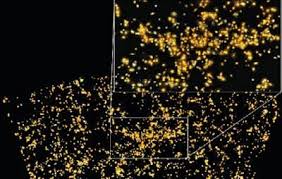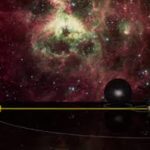Saraswaty Supercluster- Supercluster Discovered by Indian Scientists
Saraswaty Supercluster discovered recently, is the first discovery of a super cluster by a team consisting only Indian scientists and researchers.
What are galaxy clusters?
A Galaxy consists of stars, dust, hot gases and dark matter which are held together by the gravitational force towards the centre. In many cases the cetre is considered to be a black hole. The number of stars in a galaxy may vary between few billion and few trillion. Galaxies exist in various shapes like elliptical, spiral, and irregular.
A galaxy cluster is a group of many galaxies varying in number from hundreds to thousands and held together by gravity. They were considered to be the biggest structure in universe till superclusters were identified. Clusters with limited number of galaxies are known as group of galaxies rather than clusters. Coma Cluster, Hercules Cluster, Virgo Cluster and Fornax Cluster are some of the famous clusters.
The term cluster was used In 1926 for the first time by Harlow Shapley and Adelaide Ames to describe a collection of galaxies.
What is a Supercluster?
Supercluster is nothing but a large collection of group of galaxies and galaxy clusters. This is presently identified as the largest rational structure in the universe. While galaxy clusters are held together by gravitational force, the member clusters in a super cluster are generally moving away from each other due to the Hubble flow.
Shapley supercluster was the first supercluster of galaxies discovered in 1989. This was followed by Sloan Great Wall ( 2003) and Laniakea (2014).
Earth is a member of the Milky Way galaxy which in turn is a member of Laniakea supercluster. The Milky Way is often referred as Akash Gangain India, the name deriving the famous river Ganga. Hence, the new discovery is made after the ancient river Saraswati.
What are the features of Saraswati supercluster?
Saraswati is the newly identified super cluster with 42 member clusters. Saraswati supercluster is estimated to be 4000 million light years away from earth and is in the constellation of Pisces.It is spread across 600 million light years. This structure is the furthest of all discovered superclusters.
Watching a supercluster at 4000 light years away means we are seeing the light started from it around 4 billion years back. The estimated age of the universe is 13.8 billion years. Hence the discovery proves that this massive structure was in existence when the universe was around 10 billion years old.
Saraswati super cluster is located in the Stripe 82 of Sloan Digital Sky Survey (SDSS). It is an ambitious plan started in 2000 to create a 3D digital map of the universe. SDSS has identified nearly 50 million galaxies and mapped around 93,000 galaxies. Stripe 82 is an identified stretch in the SDSS map. It is very hard to outline the boundaries of a supercluster. Maps like Sloan Digital Sky Survey offer a great relief to scientists. The astronomers succeeded in defining 43 clusters of galaxies linked by a network of filaments.
Discovery of Saraswati is expected to help scientist to understand dark energy better. Dark energy is considered to be the force behind the expansion of the universe, though yet to be proved by scientists.
Who are the people behind discovery of Saraswati Supercluster?
Discovery of Saraswati Super Cluster is done by a group of Indian scientists from Inter University Centre for Astronomy (IUCAA)- Pune, Indian Institute of Science Education and Research(IISER)-Pune, National Institute of Technology (NIT)- Jamshedpur and Newman College –Thodapuzha. Incidentally, it may be pointed out that Professor Somak Raychaudhury, present Director of IUCAA is the discoverer of “Shapley Supercluster” . This was discovered as part of his PhD thesis work at University of Cambridge. This is the first time an all Indian member team identifying a supercluster. Their paper will be published in the next issue of The Astrophysical Journal, the research journal of the American Astronomical Society. Dr. Joydeep Bagchi is the lead author of the paper.









